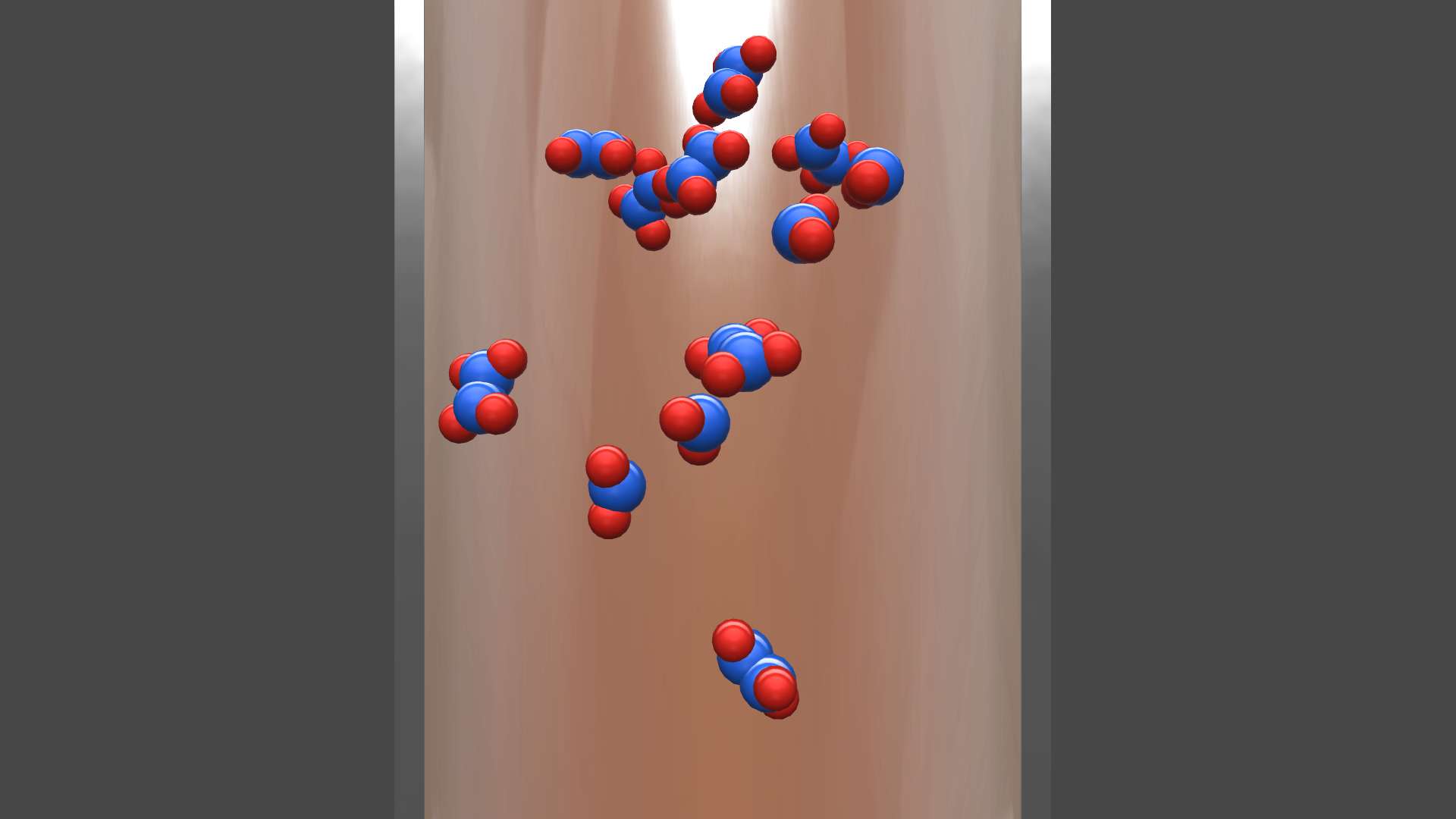Heading 1
Heading 2
Heading 3
Heading 4
Heading 5
Heading 6
Lorem ipsum dolor sit amet, consectetur adipiscing elit, sed do eiusmod tempor incididunt ut labore et dolore magna aliqua. Ut enim ad minim veniam, quis nostrud exercitation ullamco laboris nisi ut aliquip ex ea commodo consequat. Duis aute irure dolor in reprehenderit in voluptate velit esse cillum dolore eu fugiat nulla pariatur.
Block quote
Ordered list
- Item 1
- Item 2
- Item 3
Unordered list
- Item A
- Item B
- Item C
Bold text
Emphasis
Superscript
Subscript
About This Simulation
Learn about equlibrium and help a famous scientist to prevent a global famine by applying your knowledge to increase the yields of fertilizer for the crops.
Learning Objectives
- Predict the directionality of reversible reactions according to Le Chatelier
- Calculate the equilibrium constant and reaction quotient
- Understand the Haber process
About This Simulation
Lab Techniques
Related Standards
- HS-PS1-6
- Chemistry 7.6 Properties of the Equilibrium Constant
- Chemistry 7.1 Introduction to Equilibrium
- Chemistry 7.2 Direction of Reversible Reactions
- Chemistry 7.8 Representations of Equilibrium
- Chemistry 7.9 Introduction to Le Châtelier's Principle
- Chemistry 7.5 Magnitude of the Equilibrium Constant
- Chemistry 7.7 Calculating Equilibrium Concentrations
- Chemistry 7.3 Reaction Quotient and Equilibrium Constant
- Chemistry 7.4 Calculating the Equilibrium Constant
- Chemistry 7.10 Reaction Quotient and Le Châtelier's Principle
- 7.1 Equilibrium
Learn More About This Simulation
Equilibrium describes the state of a reversible reaction, in which the forward and backward reactions happen at equal rates. In this state, the concentrations of reactants and products are stable and do not change over time. Thus, there are no net changes in the concentrations of the reactant(s) and product(s). Such a state is known as dynamic equilibrium. It is a particular example of a system in a steady state.
Thermodynamics
In thermodynamics a closed system is in thermodynamic equilibrium when reactions occur at such rates that the composition of the mixture does not change with time. Reactions do in fact occur, sometimes vigorously, but to such an extent that changes in composition cannot be observed.
Help out a famous scientist
In chemistry there are several different types of equilibria: thermodynamic equilibrium, diffusive equilibrium, thermal equilibrium, and many more. In the Equilibrium Simulation, you will learn about the general chemical equilibrium and help a famous scientist to prevent a global famine. You will learn how to influence and predict the directionality of reversible reactions in the lab.
Will you be able to apply your knowledge to increase the yields of fertilizer for the crops?
For Science Programs Providing a Learning Advantage
Boost STEM Pass Rates
Boost Learning with Fun
75% of students show high engagement and improved grades with Labster
Discover Simulations That Match Your Syllabus
Easily bolster your learning objectives with relevant, interactive content
Place Students in the Shoes of Real Scientists
Practice a lab procedure or visualize theory through narrative-driven scenarios


FAQs
Find answers to frequently asked questions.
Heading 1
Heading 2
Heading 3
Heading 4
Heading 5
Heading 6
Lorem ipsum dolor sit amet, consectetur adipiscing elit, sed do eiusmod tempor incididunt ut labore et dolore magna aliqua. Ut enim ad minim veniam, quis nostrud exercitation ullamco laboris nisi ut aliquip ex ea commodo consequat. Duis aute irure dolor in reprehenderit in voluptate velit esse cillum dolore eu fugiat nulla pariatur.
Block quote
Ordered list
- Item 1
- Item 2
- Item 3
Unordered list
- Item A
- Item B
- Item C
Bold text
Emphasis
Superscript
Subscript
A Labster virtual lab is an interactive, multimedia assignment that students access right from their computers. Many Labster virtual labs prepare students for success in college by introducing foundational knowledge using multimedia visualizations that make it easier to understand complex concepts. Other Labster virtual labs prepare learners for careers in STEM labs by giving them realistic practice on lab techniques and procedures.
Labster’s virtual lab simulations are created by scientists and designed to maximize engagement and interactivity. Unlike watching a video or reading a textbook, Labster virtual labs are interactive. To make progress, students must think critically and solve a real-world problem. We believe that learning by doing makes STEM stick.
Yes, Labster is compatible with all major LMS (Learning Management Systems) including Blackboard, Canvas, D2L, Moodle, and many others. Students can access Labster like any other assignment. If your institution does not choose an LMS integration, students will log into Labster’s Course Manager once they have an account created. Your institution will decide which is the best access method.
Labster is available for purchase by instructors, faculty, and administrators at education institutions. Purchasing our starter package, Labster Explorer, can be done using a credit card if you are located in the USA, Canada, or Mexico. If you are outside of North America or are choosing a higher plan, please speak with a Labster sales representative. Compare plans.
Labster supports a wide range of STEM courses at the high school, college, and university level across fields in biology, chemistry, physics, and health sciences. You can identify topics for your courses by searching our Content Catalog.












